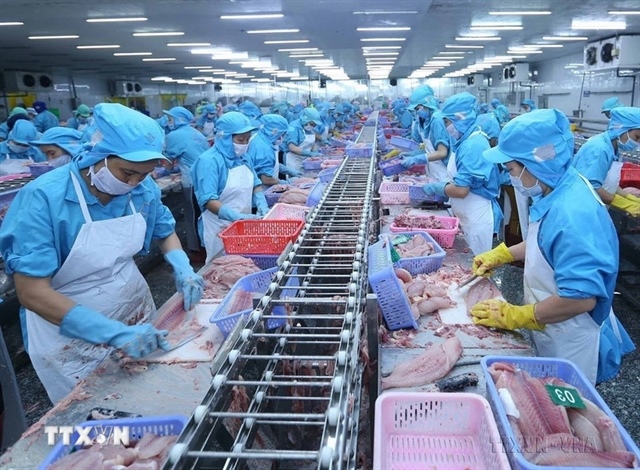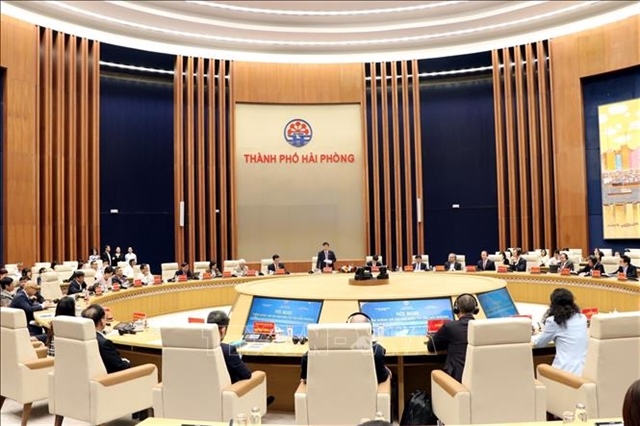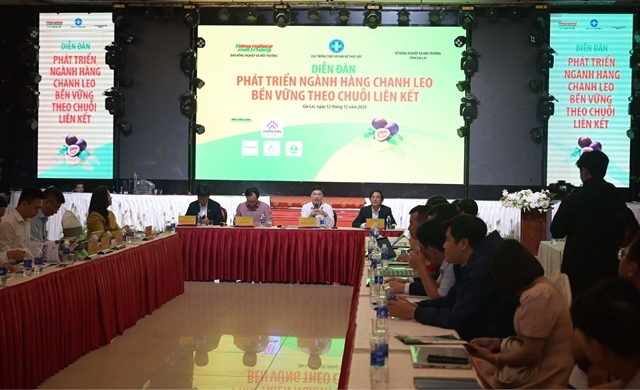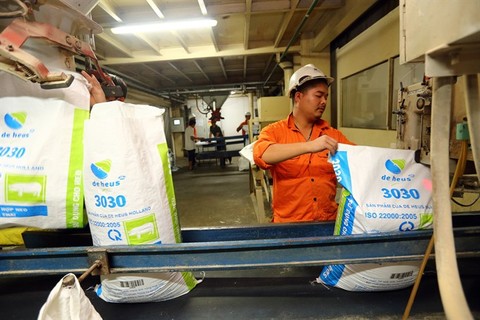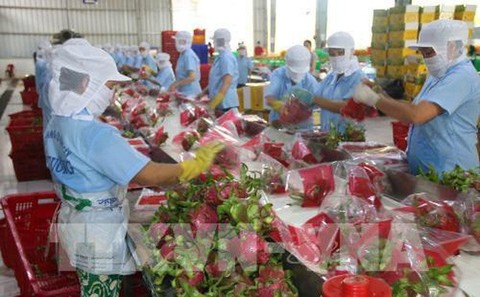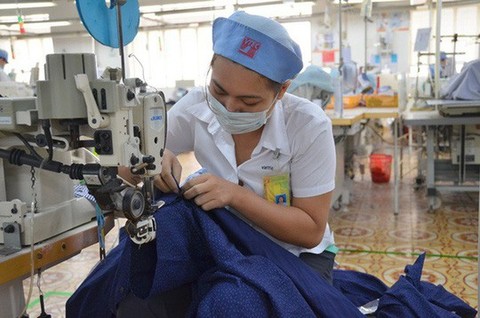Vietnam must keep up with new industrial revolution
Vietnam must keep up with new industrial revolution
Vietnam’s economy is changing quickly in the wake of the Fourth Industrial Revolution. Professor Nguyen Mai, former Vice Chairman of the State Committee for Co-operation and Investment (now the Ministry of Planning and Investment), writes on how this revolution can impact the country, particularly in terms of foreign direct investment.
The world is witnessing the development of the Fourth Industrial Revolution (4IR), which is opening up many opportunities for countries across the globe, including Vietnam. However, some have commented that while Vietnam is indeed being industrialised, it still has a way to go and should focus on implementing the Second Industrial Revolution first, instead of thinking about the 4IR.
In fact, Vietnam has been integrating itself deeply into the world’s economy, with aspirations to elevate itself amongst global value chains and various achievements to show for it. Currently, Vietnam is conducting the Second Industrial Revolution with the construction of social and technical infrastructure, while also implementing the Third Industrial Revolution with the development of IT, automation systems, and the Internet. The country also actively engages with the 4IR in order to grab opportunities to catch up with regional and global development.
In May 2017, the prime minister issued a decree on strengthening the local capacity to approach the 4IR, offering many solutions on creating breakthroughs in infrastructure and IT application, improvement of the country’s business climate, selection of key strategic products for national development, and the formation of startup ecosystems.
Impacts on foreign direct investment
The 4IR requires Vietnam to alter its policies in order to further lure in foreign direct investment (FDI). While Vietnam still puts top priority on attracting FDI into high technology and environmentally-friendly technology, education and training, research and development (R&D), healthcare, and infrastructure, the country considers the 4IR an effective gateway to add further value to the sectors of IT, electronics, Internet of things (IoT), artificial intelligence, virtual reality, cloud computing, big data, mechanics, automation, and biotechnology.
To materialise its green growth goals, Vietnam should not endorse more FDI projects in the production of cement or steel, and oil refining. It should limit this type of FDI through a considered selection of investors, and attract modern, more efficient technology into power plants. It should also have more incentives for projects to build renewable energy sources, such as solar, wind, and tidal.
Localities with a relatively high development level should attempt to attract FDI into sectors and products that have a high content of knowledge and added value, and should not attract labour-intensive and environmentally-unfriendly projects. This will enable Vietnam to build its new growth model.
Meanwhile, localities with a low development level should build their infrastructure works to narrow the development gap between them and the country’s big economic hubs. They should also have
specialised policies for labour-intensive projects in the garment, textile, and footwear sectors. It is also necessary for them to take advantage of their potential, developing tourism and services, and connecting with FDI firms in neighbouring areas as to attract investment into their modern technological and service sectors.
While continuing to allure FDI from small- to medium-d enterprises, the country needs to pay more heed to luring capital from the world’s leading transnational corporations operating in the high technology sector, and constructing big R&D centres to create high-quality products that have high added value and can compete on a global level.
Proving Vietnam’s eligibility as an attractive investment destination, Samsung Group has selected Vietnam as their global mobile phone manufacturing base, generating an export turnover of $50 billion last year and accounting for a staggering 25 per cent of the country’s total export turnover.
Vietnam’s FDI incentive policy should be suitable to the effectiveness of each project. Those projects enjoying incentives must be listed as projects prioritised for development.
In need of bigger reforms
According to a report issued in June 2017 by the World Intellectual Property Organisation, the US-based Cornell University, and the Institute for Economic Analysis and Decision-making, Vietnam was ranked 47th out of 127 nations in terms of global innovation, up 12 places from the previous year.
Within ASEAN, Vietnam stayed ahead of Thailand and was seen as having great potential for developing a knowledge-based economy.
According to experts, in order to effectively assess the impacts of the 4IR, it is necessary to conduct appropriate scientific research to precisely assess effects in each industry and its products. The results of this would be key to building a national development strategy with apt goals and without wasting resources.
Dam Bach Duong, head of the Ministry of Science and Technology’s Department for High Technology, has proposed that Vietnam actively take specific action with considerable amendments. Examples of this include the improvement of the National Committee on Application of Technology and Information’s operations, as well as supporting enterprises in IT application in order to catch up with the latest global technological trends.
Duong said that efforts must be made to focus on researching and applying new technologies like IoT, cloud computing, artificial intelligence, and big data. This would maintain and develop enterprises’ competitiveness, help them save operational costs, and produce a higher quality of products that can contribute to environmental protection.
Vietnam also ought to attract investment into the manufacturing and assembly of machinery equipment and digital spare parts, enabling the application of digital technologies to industrial sectors and improving the country’s export structure via the development of high-tech and supporting-industry products.
It is fundamental to build a development strategy for the automation industry and high technology sectors, with special incentives and preparations for progress. These include the close co-operation between science and technology on one side and business and production on the other; the boosting of technological renovation in private enterprises; the strong application of new technologies; the boosting of international co-operation
in R&D and technological transfers; and the prioritisation of financial assistance for organisations and individuals with excellent scientific and technological achievements.
The first early studies on the global 4IR have all stressed the selection of some specific sectors for investment, which can be expanded to other sectors. For example, regarding IoT, Vietnam should first begin by building smart edifices instead of smart cities, because of its limited resources and technologies.
The determining factors for forming a 4IR development strategy include joint efforts from leading experts, which can help specify goals along the way.
Conclusion So, to take advantage of new opportunities and weather all challenges in implementing the 4IR, much remains to be done.
Specifically, the government needs to change its management method. The government must be a regulator and facilitator equipped with modern information tools. This will create a favourable climate for the innovation of enterprises and people.
Enterprises are experiencing new trends in modern technology that have created new production methods and radically changed production chains. This requires enterprises to improve their corporate governance capacity, technologies, and product quality. They also must reduce operation costs to adapt to the new 4IR-led development environment.
Scientific research and training organisations must also radically alter their operational methods in order to adapt to 4IR requirements. They need to update their technology and equipment with the view of meeting enterprises’ growing demand in technological renovation. Importance must be attached to the application of the world’s state-of-the-art technologies in Vietnam, connecting institutes with enterprises on a win-win basis, and creating technological incubators – adventure investment funds, which are aimed at supporting new enterprises and startups.
Meanwhile, people must also partake in the country’s renovation process in order to create more value-added products which can compete with products on a global scale. People also need to be given favourable conditions to enjoy high-quality goods and products sold online via premium services.
In short, the Fourth Industrial Revolution is now growing nationwide, and has significant impacts across all sectors, enterprises, and people. Thus, it is necessary for the government, enterprises, organisations, and general population to modify themselves in order to develop Vietnam into a modern industrial nation.


